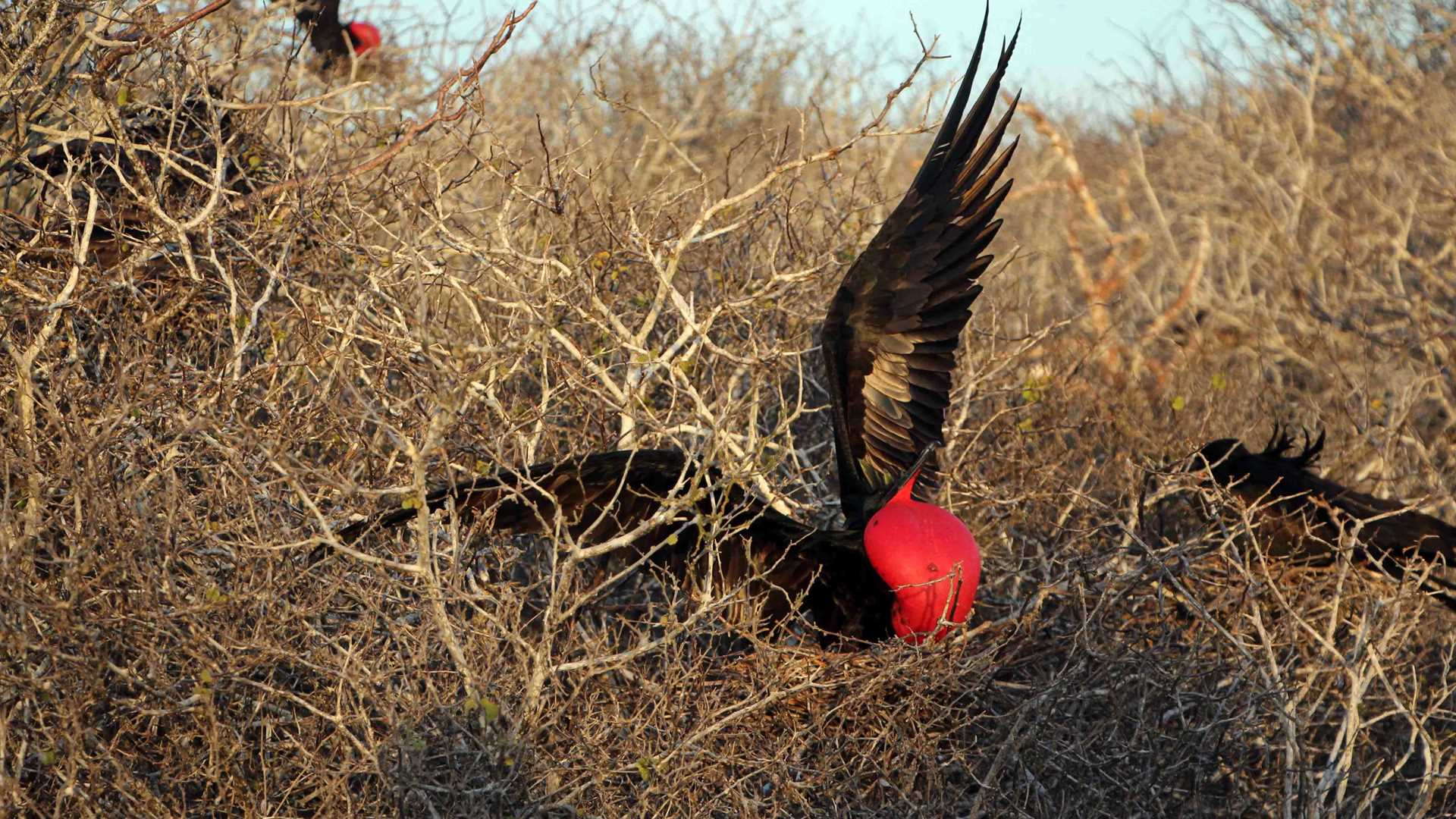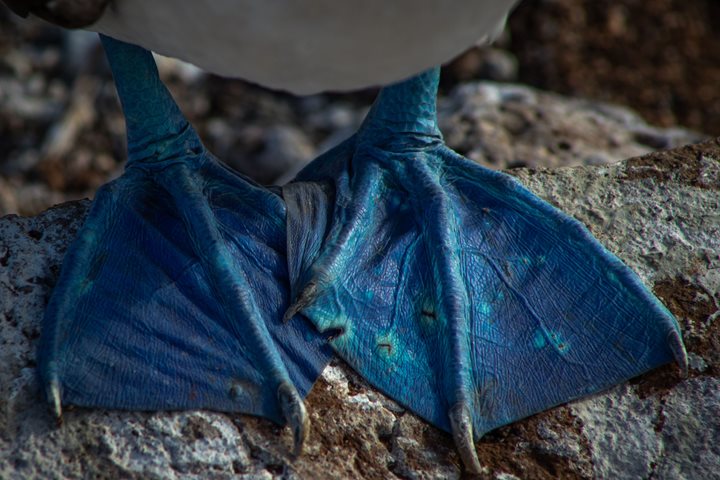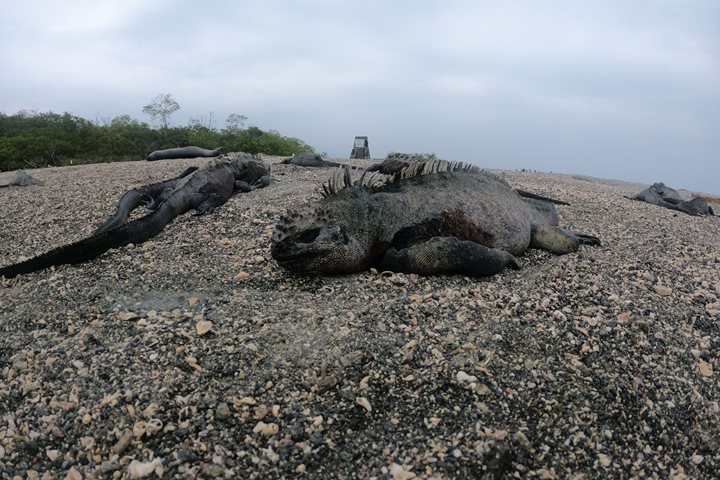One of the most incredible islands in the Galapagos is Genovesa; and this is because long time ago Genovesa was a very active volcano with a large caldera, far from the central islands and of course far from the underwater Galapagos platform. Nowadays Genovesa is home of thousands of sea and land birds, without land reptiles and with the short-eared owl as the top predator due to the lack of Galapagos hawks.
After crossing the Equator line from the South, early in the morning we arrived to Genovesa; with the first beams of sun we observed curious red footed boobies flying around the National Geographic Islander, while in the ocean, storm petrels and some swallow-tailed gulls tried to catch some food from the surface. After breakfast the sun came out and we made a wet landing on a small coral beach and were immediately amazed by the number of seabirds nesting, roosting, and flying in this area; we observed some frigate birds with their red pouches inflated and red-footed boobies were on their nests in the low shrubs. In the air, frigates and boobies soared on the constant breeze and sea lions lounged on the sand and in the waves. Walking along the trail we approached to the mangroves area, where fluffy chicks were the delightful of our guests while on the top of bushes some males frigatebirds with their unmistakable sounds, showed us their happiness after been accepted by a female; they remain together as hugging each other following a well elaborated ritual very common in sea birds around the world.
After the first outing, everybody returned to the ship preparing for kayaking or snorkeling. I led a group of eager kayakers along the base of the steep cliffs inside the sunken caldera of Darwin Bay we had a marvelous experience during which we saw many seabirds, sea lions and a large eagle ray close to the kayaks. Close to us, the snorkelers swam along at the base of the cliffs observing many colorful fish and a few fur sea lions. Our guests recognized many of the more common species of fish, like the king angels, yellow-tailed razor fish, Moorish idols, large-banded blennies, rainbow wrasse, blue-chin parrot fish among others.
In the afternoon, at 4PM we lead our Guests up the steep and rustic steps and across the point of the island to search for petrels and short -eared owls. We identified the large ground finch and the unique sharp billed ground finch feeding on dry seeds along the lava rocks. On the bushes we admired the many fluffy baby frigates in their nests and the much larger juvenile Nazca boobies. Out on the flat lava flow many storm petrels were swooping around and disappearing into their nest holes. We found several of the well camouflaged short-eared owls that were hunting these numerous petrels.
With the lasts beams of sun, we returned to the ship contentedly, knowing that we have shared an amazing experience with incredible creatures and unique places that will remain in our memories forever.







